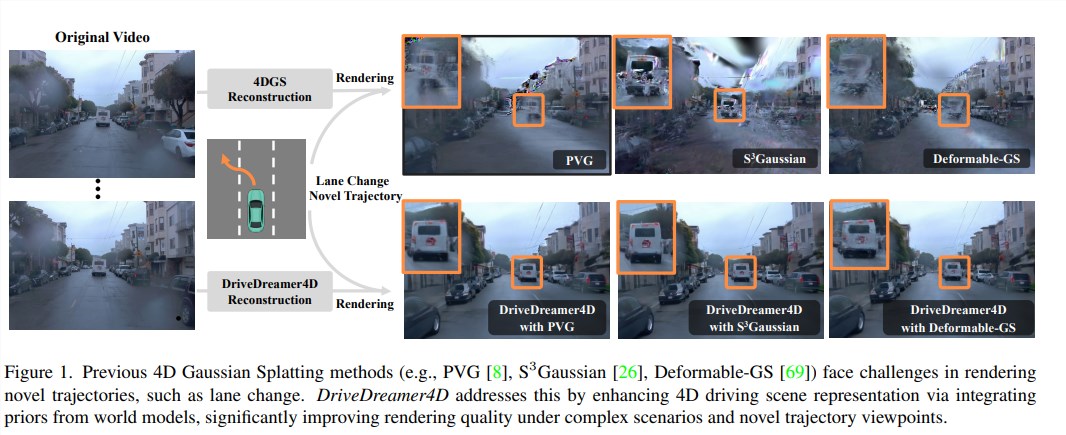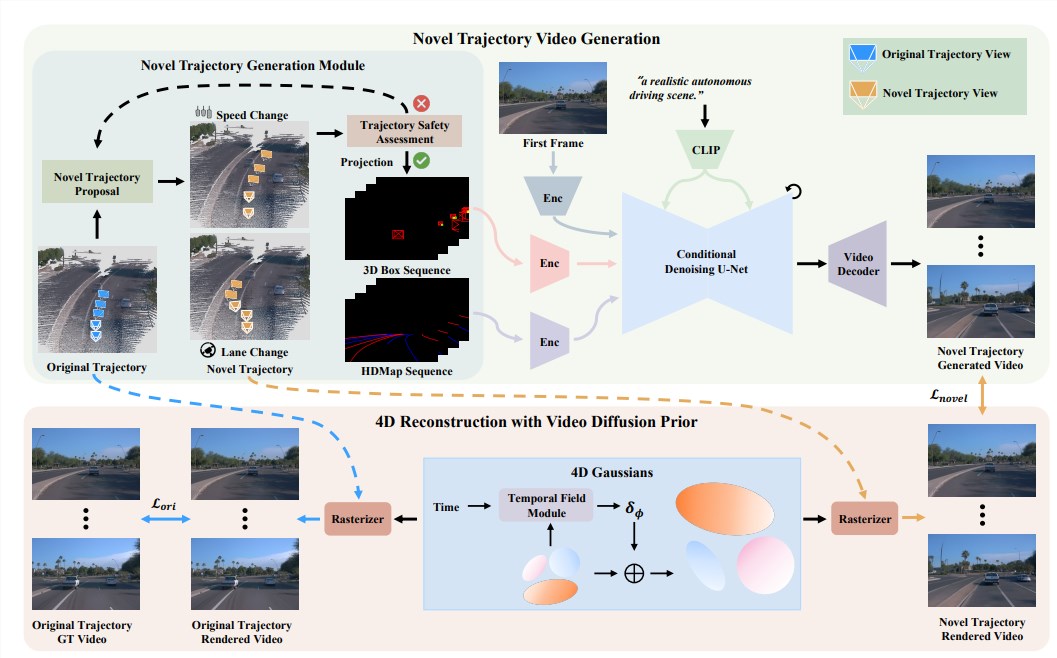Jijia Technology recently released a new 4D driving scene reconstruction framework called DriveDreamer4D. This framework uses the prior knowledge of the world model to significantly improve the 4D scene reconstruction effect, solving the problem that traditional NeRF and 3DGS methods are prone to "overturning" under complex road conditions. "The problem. DriveDreamer4D effectively expands the training data and greatly improves the robustness of the model by introducing a world model.
The traditional 4D scene reconstruction method mainly relies on two major schools: NeRF and 3DGS. NeRF uses neural networks to render photos into 3D models, while 3DGS uses a three-dimensional Gaussian function to simulate objects in the scene. However, both methods rely highly on training data and perform poorly when dealing with complex road conditions (such as lane change, acceleration, and deceleration). DriveDreamer4D introduces world models to predict possible future situations and generates new perspective video data under various complex road conditions, which is equivalent to providing "brain-compensated" training data for the 4D scene reconstruction model. In addition, the new trajectory generation module (NTGM) automatically generates various new trajectories that conform to traffic rules, and uses the world model to generate videos from corresponding perspectives, allowing the model to be at ease under various complex road conditions. Experimental results show that the reconstruction effect of DriveDreamer4D in dealing with complex road conditions is significantly better than that of traditional methods, the generated image is more fidelity, and can accurately restore the location of the vehicle and lane lines. The emergence of DriveDreamer4D is expected to significantly improve the efficiency, safety and reliability of autonomous driving research and development and testing.

But both methods have a fatal weakness: they rely too much on training data! For example, you have only seen a car driving in a straight line, and suddenly drifted and turned around, and you were confused. Therefore, when facing complex road conditions, such as lane change, acceleration, and deceleration, they are prone to overturning.
In order to solve this problem, Jijia Technology has launched a big killer - DriveDreamer4D this time. In short, this thing is to add an AI plug-in-the world model to the reconstruction of 4D scenes.

You can understand the world model as an AI brain that can predict what may happen in the future based on existing data. DriveDreamer4D uses the world model to generate new perspective video data under various complex road conditions, which is equivalent to feeding the 4D scene reconstruction model "brain-compensated" training data, so that it can be knowledgeable and no longer fail.
What's even more awesome is that DriveDreamer4D also specially designed a new track generation module (NTGM). This thing can automatically generate various new trajectories that meet traffic rules, such as lane change, acceleration, deceleration, etc., and then use the world model to generate videos from corresponding perspectives, which is equivalent to asking for a "schooler" for the 4D scene reconstruction model. Let it be at ease under various complex road conditions.
The experimental results also prove the strength of DriveDreamer4D. When dealing with complex road conditions, its reconstruction effect is significantly better than traditional methods, the generated image is more fidelity, and it can accurately restore the location of the vehicle and lane lines.
In short, the emergence of DriveDreamer4D is like throwing a nuclear bomb in the field of 4D scene reconstruction, directly exploding the technology ceiling. With it, the research and development and testing of autonomous driving will be more efficient, safe and reliable.
Of course, DriveDreamer4D is still in the research stage and there are still many things to improve in the future. But I believe that as technology continues to develop, it will become stronger and ultimately become an indispensable part of the field of autonomous driving.
Paper address: https://arxiv.org/pdf/2410.13571
Project homepage: https://drivedreamer4d.github.io/
Code address: https://github.com/GigaAI-research/DriveDreamer4D
The emergence of DriveDreamer4D framework has brought revolutionary breakthroughs to 4D scene reconstruction technology, and its application prospects in the field of autonomous driving are worth looking forward to. Although it is still in the research stage, its powerful performance and broad application prospects indicate that autonomous driving technology will move to a new height.